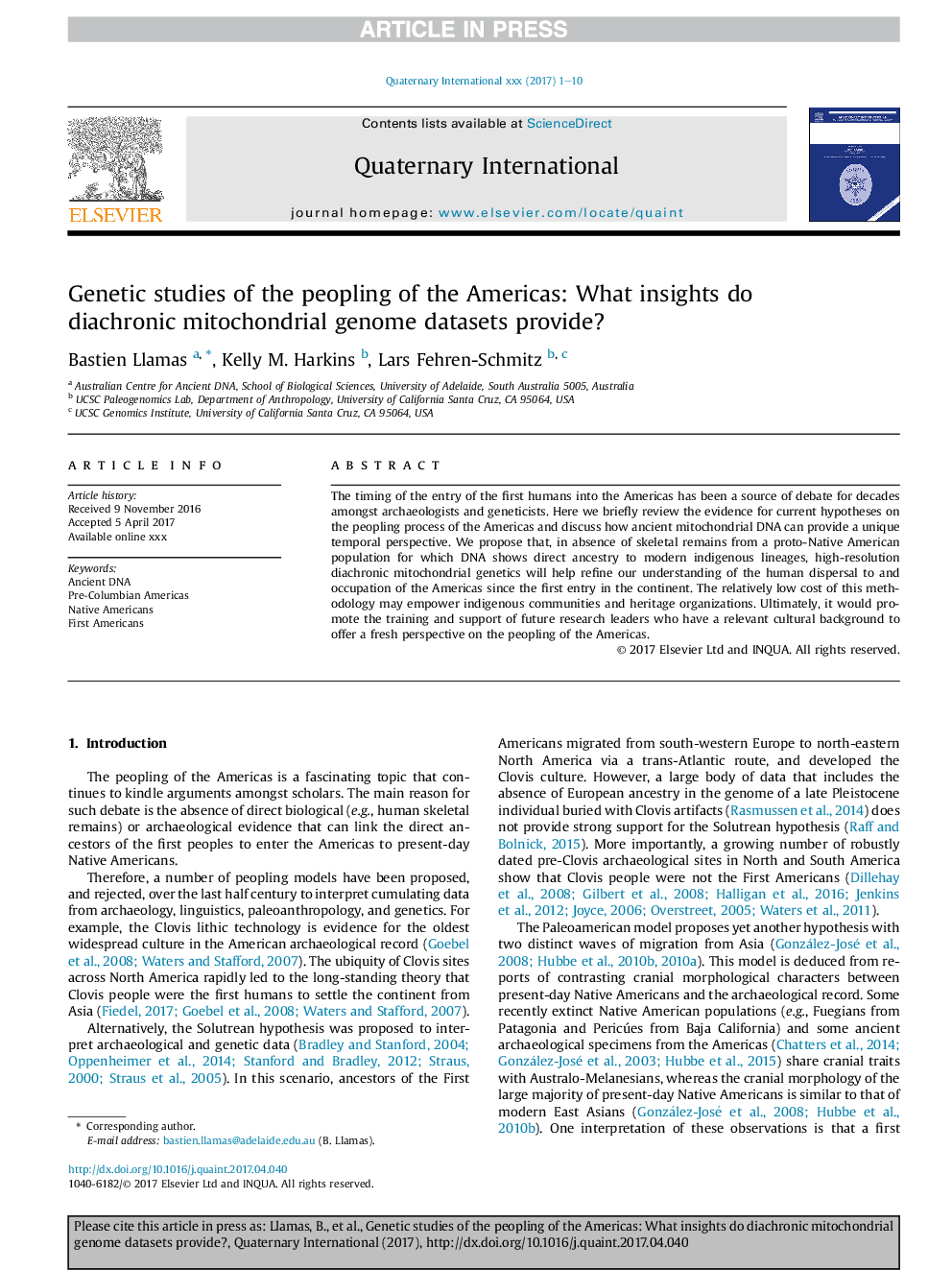| Article ID | Journal | Published Year | Pages | File Type |
|---|---|---|---|---|
| 5113295 | Quaternary International | 2017 | 10 Pages |
Abstract
The timing of the entry of the first humans into the Americas has been a source of debate for decades amongst archaeologists and geneticists. Here we briefly review the evidence for current hypotheses on the peopling process of the Americas and discuss how ancient mitochondrial DNA can provide a unique temporal perspective. We propose that, in absence of skeletal remains from a proto-Native American population for which DNA shows direct ancestry to modern indigenous lineages, high-resolution diachronic mitochondrial genetics will help refine our understanding of the human dispersal to and occupation of the Americas since the first entry in the continent. The relatively low cost of this methodology may empower indigenous communities and heritage organizations. Ultimately, it would promote the training and support of future research leaders who have a relevant cultural background to offer a fresh perspective on the peopling of the Americas.
Related Topics
Physical Sciences and Engineering
Earth and Planetary Sciences
Geology
Authors
Bastien Llamas, Kelly M. Harkins, Lars Fehren-Schmitz,
